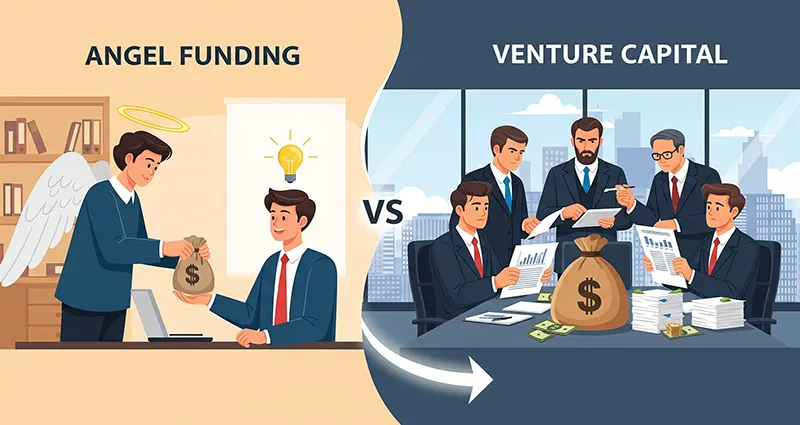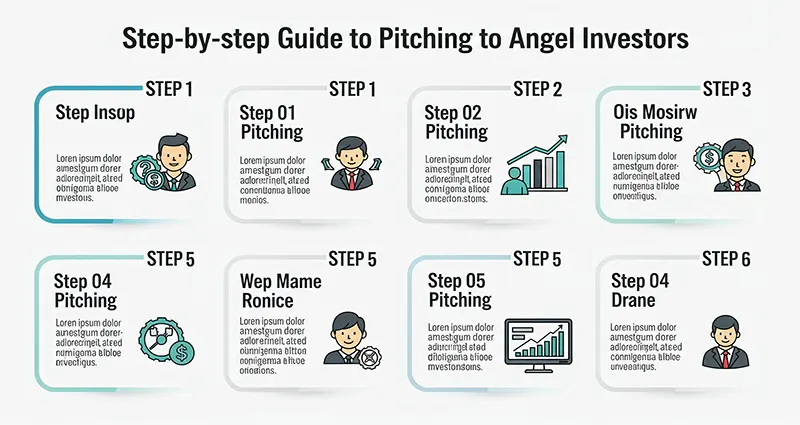Differences between general partners and venture partners in VC firms
General Partners (GPs) and Venture Partners (VPs) are both senior-level roles within a venture capital (VC) firm, but they have distinct responsibilities, levels of commitment, and compensation structures. While GPs are the core, full-time leaders who make final investment decisions, VPs are typically part-time or project-based professionals who provide specialized expertise.
General Partner (GP)
A General Partner is a full-time, permanent member of the VC firm’s leadership team. They are the true decision-makers and carry the ultimate responsibility for the fund’s performance. Their role is comprehensive, spanning the entire lifecycle of a fund.
- Fund Management: GPs are responsible for raising capital from limited partners (LPs), such as pension funds and endowments. They manage the fund’s capital, oversee operations, and are legally and financially liable for the fund’s actions.
- Investment Decisions: They lead the investment committee, making final “yes or no” decisions on which startups to fund. They also determine follow-on investments and sit on the boards of portfolio companies to provide strategic direction.
- Compensation: GPs earn a combination of an annual management fee (typically 2% of the fund’s assets) and a share of the fund’s profits, known as carried interest (often 20%). Their compensation is directly tied to the overall success of the fund.
Venture Partner (VP)
A Venture Partner is a more flexible, often part-time role. VPs are brought in for their specific expertise, network, or deal-sourcing abilities without the full-time commitment and responsibilities of a GP.
- Deal Sourcing & Advising: A VP’s primary role is to find promising
Angel Funding vs. Venture Capital: A Guide for Early-Stage Startups
For an early-stage startup, securing the right type of funding is a pivotal decision that can shape its entire trajectory. While both angel investors and venture capitalists (VCs) provide crucial capital in exchange for equity, they operate in fundamentally different ways. Understanding these differences is essential for founders to choose the path that best aligns with their company’s vision and goals.
This article breaks down the key distinctions between angel funding and venture capital for early-stage tech startups.
Angel Investors: The First Believers
Angel investors are typically high-net-worth individuals who invest their own personal funds into early-stage companies. The name “angel” comes from Broadway, where wealthy individuals would provide money to save a show from closing. In the startup world, angels are often the very first external investors, acting as a crucial bridge between bootstrapping (using personal savings, friends, and family) and institutional funding.
Key Characteristics of Angel Funding:
- Source of Funds: Angels invest their own money. This gives them more flexibility and often results in a more personal, hands-on relationship with the founder.
- Investment Size: Angel investments are generally smaller, ranging from tens of thousands to a few hundred thousand dollars, and in some cases, up to a million. These funds are used for “seed” activities like building a prototype, conducting market research, and making initial hires.
- Stage of Investment: Angels are most active at the “pre-seed” and “seed” stages. They are willing to take on a higher risk, investing in an idea or a team with minimal to
How to Pitch Your Startup to Venture Partners Successfully
Pitching to venture capitalists (VCs) is a high-stakes event. It’s not just about presenting a business plan; it’s about convincing seasoned investors to believe in your vision, your team, and your ability to execute. While every VC firm has its own unique investment thesis, a successful pitch relies on a few core principles that resonate across the board.
Here is a guide to mastering the art of the VC pitch and making a lasting impression.
1. Start with a Compelling Story, Not Just Data
Before you dive into the numbers, grab their attention with a powerful narrative. VCs hear dozens of pitches a week, and the ones that stand out are those that connect on an emotional level.
- Hook Them in the First 5 Minutes: Don’t bury the lede. Start with a vivid description of the problem you are solving, either through a relatable anecdote or a shocking statistic. Make them feel the pain point.
- The “Why Now?” Moment: A great idea isn’t enough. Explain why the timing is perfect for your solution. Is there a new technology, a shift in market behavior, or a regulatory change that makes your company uniquely positioned to succeed today? This demonstrates your strategic foresight.
- Show, Don’t Just Tell: Use a live demo or a video of your product in action. This makes your solution tangible and proves that you have a working prototype, not just a concept.
2. The Pitch Deck: Your Visual Narrative
Your pitch deck is the backbone of your presentation. … READ MORE ...
Step-by-step Guide to Pitching to Angel Investors
Pitching to angel investors can feel intimidating, but a structured approach can greatly increase your chances of success. By following a clear, step-by-step guide, you can ensure you’re prepared for every stage of the process, from initial research to the final handshake.
Step 1: Research and Find the Right Investors
Before you even think about your pitch deck, you need to know who you’re pitching to. Not all investors are the same; they often specialize in certain industries or company stages.
- Identify Your Niche: Figure out what kind of investor is a good fit for your startup. Do you need someone with deep connections in fintech, or an expert in B2B SaaS?
- Use Online Platforms: Utilize resources like AngelList, Republic, and Crunchbase to find investors who have backed companies similar to yours. These platforms allow you to filter by industry, location, and investment size.
- Leverage Your Network: The best introductions come from people you know. Talk to your mentors, advisors, and fellow founders. A warm introduction is far more likely to get you a meeting than a cold email.
Step 2: Craft Your Pitch Deck
Your pitch deck is the visual story of your startup. It should be concise, compelling, and easy to understand. While there’s no single perfect template, a strong deck typically includes the following slides:
- Introduction: Your company name and tagline.
- The Problem: Clearly articulate the pain point or problem you’re solving.
- The Solution: Introduce your product or service as the solution to that problem.
Simplifying the Complexities of Employee Monitoring: A Detailed Overview
In the modern workplace, technology is everywhere, and so are tools to optimize employee monitoring. It is no doubt that employee activity monitoring software provides several advantages, such as increased productivity and better cybersecurity, but this also raises legitimate concerns surrounding privacy. This article explores the impact of workplace surveillance, delving into the consequences of workplace monitoring and giving useful tips for employees to manage surveillance tools in their workplace. An example of such software that is sometimes utilized is Controlio.
Think about walking into a company’s house of premises, and each workspace has devices ready to record you from every click or pause to every action you take. This is disconcerting and feels uncomfortable, but is what many employees are already facing. The truth is that the use of monitoring software by employees is on the rise. Specialist researchers estimate that one in three companies uses some form of employee monitoring. This trend demonstrates the need for employees to learn how to deal with these harsh tools.
What does employee monitoring entail? These systems can record almost everything that an employee does, from browsing websites and utilizing applications to sending and receiving emails, and even their keystrokes. This level of oversight is often facilitated by employee activity tracking software, such as Controlio, and while employers may assume this information is for streamlining processes, enhancing security, or ensuring rules and regulations, it is comprehensible that employees themselves will certainly have reservations towards being monitored to this extent.… READ MORE ...













